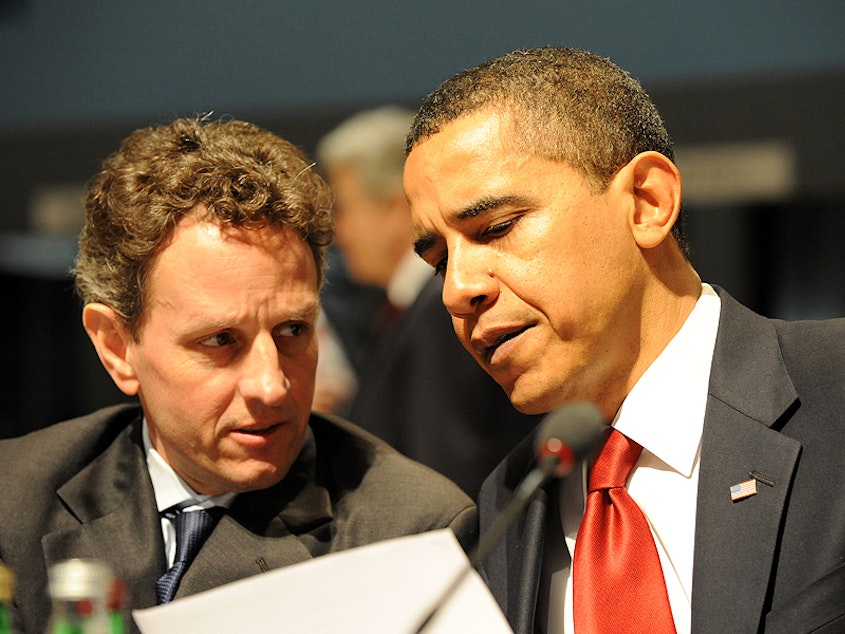'Stress Test': Before, During And After The Panic Of 2008

The financial crisis of 2008 is widely referred to as the worst fiscal disaster since the Great Depression of the 1930s. It threatened large financial institutions with collapse and resulted in bank bailouts and downturns in stock and housing markets around the world.
In the lead-up to the crisis, Timothy Geithner had developed substantial knowledge of international economic crises. Geithner spent his early career as a high level bureaucrat in the U.S. Treasury Department, where he became a protégé of Larry Summers and Robert Rubin.
Geithner's new book is “Stress Test: Reflections on Financial Crises.” It has garnered praise and criticism as an insiders’ history of the moment. But without doubt his take on crucial episodes in the crisis — the rescue of Bear Stearns, the Lehman Brothers failure, the AIG debacle, and constant criticism of the administration’s response— adds substance for further debate.
From 2003 to 2009, Geithner was president of the Federal Reserve Bank of New York. In the aftermath of the 2008 crisis, Geithner became Secretary of the Treasury under President Obama from 2009 to 2013. He left public service to become president of Warburg Pincus, a Wall Street private equity firm.
Back in 2009 journalist Gary Weiss had this to say about Geithner’s legacy: “Perhaps Tim Geithner will be the Harry Truman of his generation, unappreciated by his contemporaries, awkward in public, but judged by history to have cured the nation’s economic ills.“
Geithner was interviewed by Seattle Times columnist Jon Talton at Town Hall Seattle on May 16. The event was presented by Seattle Arts and Lectures. Ayan Sheikh recorded the talk.

